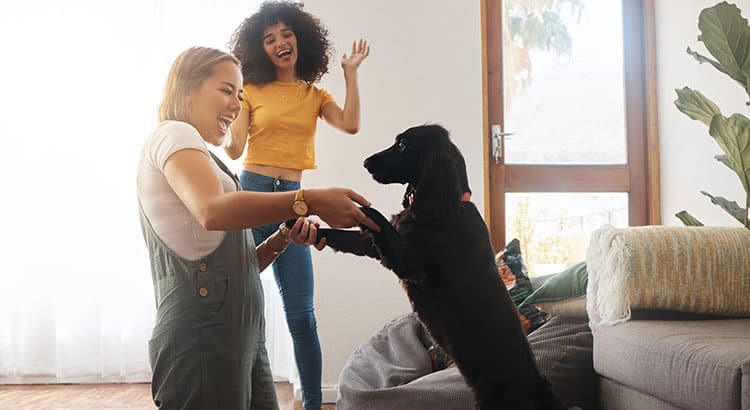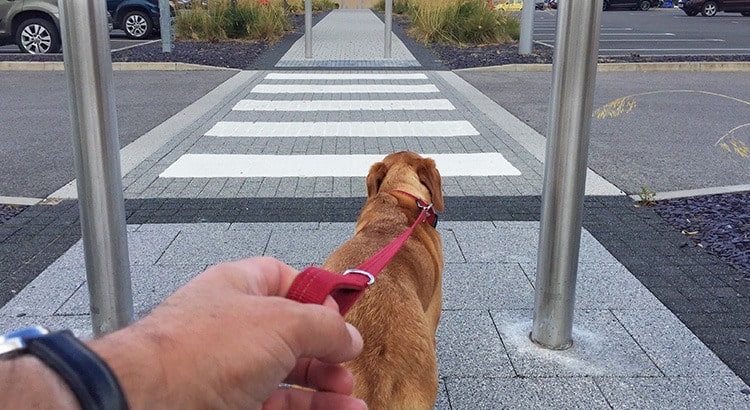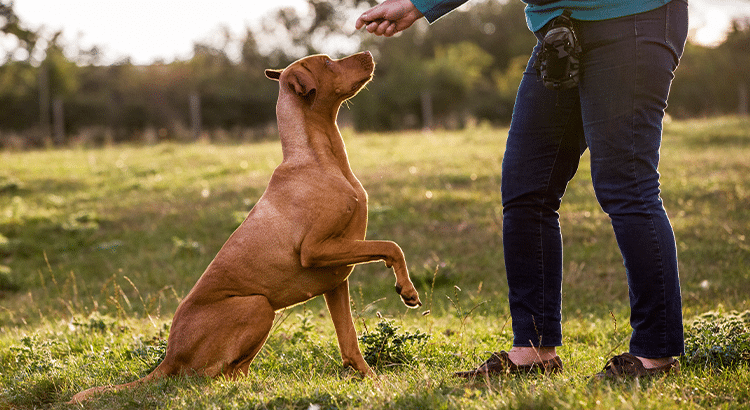
Dogs are not only loyal companions but also incredibly intelligent animals capable of learning a wide range of tricks and commands. Teaching your dog tricks is not only a fun and engaging activity but also a great way to strengthen the bond between you and your furry friend. In this blog, we’ll explore how to teach your dog tricks effectively, from basic commands to more advanced feats.
Start with the Basics
Before you dive into teaching your dog advanced tricks, ensure they have a solid foundation of basic commands like “sit”, “stay”, “come”, and “lie down”. These commands serve as building blocks for more complex tricks.
Use Positive Reinforcement
Positive reinforcement is key to successful dog training. Reward your dog with treats, praises, and affection when they perform a trick correctly. This positive feedback reinforces the desired behavior, making your dog more eager to learn.
Keep Training Sessions Short and Consistent
Dogs have short attention spans, so keep training sessions brief, typically around 10-15 minutes. Consistency is also crucial- practice regularly to reinforce what your dog has learned. According to Spirit Dog Training, “for many dogs just starting out with learning, attention spans of a minute or two are very common. A really distracted beginner dog might only be able to give you 60 seconds of attention. There is nothing you can do to instantly increase your dog’s attention span- this will happen over time.”
Choose Tricks Suited to Your Dog’s Abilities
Every dog is unique, and some tricks may be easier for certain breeds or individual dogs. Adapt your training approach to your dog’s personality and physical abilities. For example, small dogs may excel at agility tricks, while larger breeds may be better suited for strength-based tricks.
Break Tricks into Smaller Steps
Complex tricks can be broken down into smaller, manageable steps. For instance, if you’re teaching your dog to roll over, start by having them lie down, then gradually guide them through the rolling motion. Reward each successful step to build their confidence.
Be Patient and Stay Positive
Teaching tricks can be challenging, and your dog may not get it right away. Stay patient and avoid scolding or punishing them for mistakes. Maintain a positive and encouraging attitude to make the learning process enjoyable for both of you.
Practice Makes Perfect
Repetition is essential for solidifying your dog’s understanding of a trick. Practice regularly and in various environments to ensure your dog can perform tricks in different situations. Studies show that dogs who are trained one to two times a week perform better than pups trained daily. Training too much can actually have a negative effect on the relationship we are trying to build with them.
Gradually Add Distractions
As your dog becomes proficient in performing tricks, gradually introduce distractions to test their focus and obedience. This helps them generalize their learning and perform tricks even in distracting situations.
Seek Professional Help if Needed
If you’re struggling with training or want to teach your dog advanced tricks like backflips or dancing, consider enlisting the help of a professional dog trainer. They can provide expert guidance and techniques tailored to your dog’s needs.
Enjoy the Journey Together
Teaching your dog tricks should be a fun and rewarding experience for you both you and your furry companion. Celebrate your dog’s successes and enjoy the bond that deepens as you embark on this training journey together.
Conclusion
In conclusion, teaching your dog tricks can be a fulfilling and enjoyable endeavor. Remember to start with the basics, use positive reinforcement, and be patient throughout the process. With dedication and practice, you and your dog can impress everyone with an array of tricks and commands.
Want savings on toys, treats and additional training materials to help? Sign up for our Pin Paws Plus or Pin Paws Pet Care membership for member-only access to discounts on pet-centric products and services.
Table of content
- Start with the Basics
- Use Positive Reinforcement
- Keep Training Sessions Short and Consistent
- Choose Tricks Suited to Your Dog’s Abilities
- Break Tricks into Smaller Steps
- Be Patient and Stay Positive
- Practice Makes Perfect
- Gradually Add Distractions
- Seek Professional Help if Needed
- Enjoy the Journey Together
- Conclusion
Related articles

Dogs are not only loyal companions but also incredibly intelligent animals capable of learning a wide range of tricks and commands. Teaching your dog tricks is not only a fun and engaging activity but also a great way to strengthen the bond between you and your furry friend. In this blog, we’ll explore how to teach your dog tricks effectively, from basic commands to more advanced feats.
Start with the Basics
Before you dive into teaching your dog advanced tricks, ensure they have a solid foundation of basic commands like “sit”, “stay”, “come”, and “lie down”. These commands serve as building blocks for more complex tricks.
Use Positive Reinforcement
Positive reinforcement is key to successful dog training. Reward your dog with treats, praises, and affection when they perform a trick correctly. This positive feedback reinforces the desired behavior, making your dog more eager to learn.
Keep Training Sessions Short and Consistent
Dogs have short attention spans, so keep training sessions brief, typically around 10-15 minutes. Consistency is also crucial- practice regularly to reinforce what your dog has learned. According to Spirit Dog Training, “for many dogs just starting out with learning, attention spans of a minute or two are very common. A really distracted beginner dog might only be able to give you 60 seconds of attention. There is nothing you can do to instantly increase your dog’s attention span- this will happen over time.”
Choose Tricks Suited to Your Dog’s Abilities
Every dog is unique, and some tricks may be easier for certain breeds or individual dogs. Adapt your training approach to your dog’s personality and physical abilities. For example, small dogs may excel at agility tricks, while larger breeds may be better suited for strength-based tricks.
Break Tricks into Smaller Steps
Complex tricks can be broken down into smaller, manageable steps. For instance, if you’re teaching your dog to roll over, start by having them lie down, then gradually guide them through the rolling motion. Reward each successful step to build their confidence.
Be Patient and Stay Positive
Teaching tricks can be challenging, and your dog may not get it right away. Stay patient and avoid scolding or punishing them for mistakes. Maintain a positive and encouraging attitude to make the learning process enjoyable for both of you.
Practice Makes Perfect
Repetition is essential for solidifying your dog’s understanding of a trick. Practice regularly and in various environments to ensure your dog can perform tricks in different situations. Studies show that dogs who are trained one to two times a week perform better than pups trained daily. Training too much can actually have a negative effect on the relationship we are trying to build with them.
Gradually Add Distractions
As your dog becomes proficient in performing tricks, gradually introduce distractions to test their focus and obedience. This helps them generalize their learning and perform tricks even in distracting situations.
Seek Professional Help if Needed
If you’re struggling with training or want to teach your dog advanced tricks like backflips or dancing, consider enlisting the help of a professional dog trainer. They can provide expert guidance and techniques tailored to your dog’s needs.
Enjoy the Journey Together
Teaching your dog tricks should be a fun and rewarding experience for you both you and your furry companion. Celebrate your dog’s successes and enjoy the bond that deepens as you embark on this training journey together.
Conclusion
In conclusion, teaching your dog tricks can be a fulfilling and enjoyable endeavor. Remember to start with the basics, use positive reinforcement, and be patient throughout the process. With dedication and practice, you and your dog can impress everyone with an array of tricks and commands.
Want savings on toys, treats and additional training materials to help? Sign up for our Pin Paws Plus or Pin Paws Pet Care membership for member-only access to discounts on pet-centric products and services.

Dogs are not only loyal companions but also incredibly intelligent animals capable of learning a wide range of tricks and commands. Teaching your dog tricks is not only a fun and engaging activity but also a great way to strengthen the bond between you and your furry friend. In this blog, we’ll explore how to teach your dog tricks effectively, from basic commands to more advanced feats.
Start with the Basics
Before you dive into teaching your dog advanced tricks, ensure they have a solid foundation of basic commands like “sit”, “stay”, “come”, and “lie down”. These commands serve as building blocks for more complex tricks.
Use Positive Reinforcement
Positive reinforcement is key to successful dog training. Reward your dog with treats, praises, and affection when they perform a trick correctly. This positive feedback reinforces the desired behavior, making your dog more eager to learn.
Keep Training Sessions Short and Consistent
Dogs have short attention spans, so keep training sessions brief, typically around 10-15 minutes. Consistency is also crucial- practice regularly to reinforce what your dog has learned. According to Spirit Dog Training, “for many dogs just starting out with learning, attention spans of a minute or two are very common. A really distracted beginner dog might only be able to give you 60 seconds of attention. There is nothing you can do to instantly increase your dog’s attention span- this will happen over time.”
Choose Tricks Suited to Your Dog’s Abilities
Every dog is unique, and some tricks may be easier for certain breeds or individual dogs. Adapt your training approach to your dog’s personality and physical abilities. For example, small dogs may excel at agility tricks, while larger breeds may be better suited for strength-based tricks.
Break Tricks into Smaller Steps
Complex tricks can be broken down into smaller, manageable steps. For instance, if you’re teaching your dog to roll over, start by having them lie down, then gradually guide them through the rolling motion. Reward each successful step to build their confidence.
Be Patient and Stay Positive
Teaching tricks can be challenging, and your dog may not get it right away. Stay patient and avoid scolding or punishing them for mistakes. Maintain a positive and encouraging attitude to make the learning process enjoyable for both of you.
Practice Makes Perfect
Repetition is essential for solidifying your dog’s understanding of a trick. Practice regularly and in various environments to ensure your dog can perform tricks in different situations. Studies show that dogs who are trained one to two times a week perform better than pups trained daily. Training too much can actually have a negative effect on the relationship we are trying to build with them.
Gradually Add Distractions
As your dog becomes proficient in performing tricks, gradually introduce distractions to test their focus and obedience. This helps them generalize their learning and perform tricks even in distracting situations.
Seek Professional Help if Needed
If you’re struggling with training or want to teach your dog advanced tricks like backflips or dancing, consider enlisting the help of a professional dog trainer. They can provide expert guidance and techniques tailored to your dog’s needs.
Enjoy the Journey Together
Teaching your dog tricks should be a fun and rewarding experience for you both you and your furry companion. Celebrate your dog’s successes and enjoy the bond that deepens as you embark on this training journey together.
Conclusion
In conclusion, teaching your dog tricks can be a fulfilling and enjoyable endeavor. Remember to start with the basics, use positive reinforcement, and be patient throughout the process. With dedication and practice, you and your dog can impress everyone with an array of tricks and commands.
Want savings on toys, treats and additional training materials to help? Sign up for our Pin Paws Plus or Pin Paws Pet Care membership for member-only access to discounts on pet-centric products and services.



